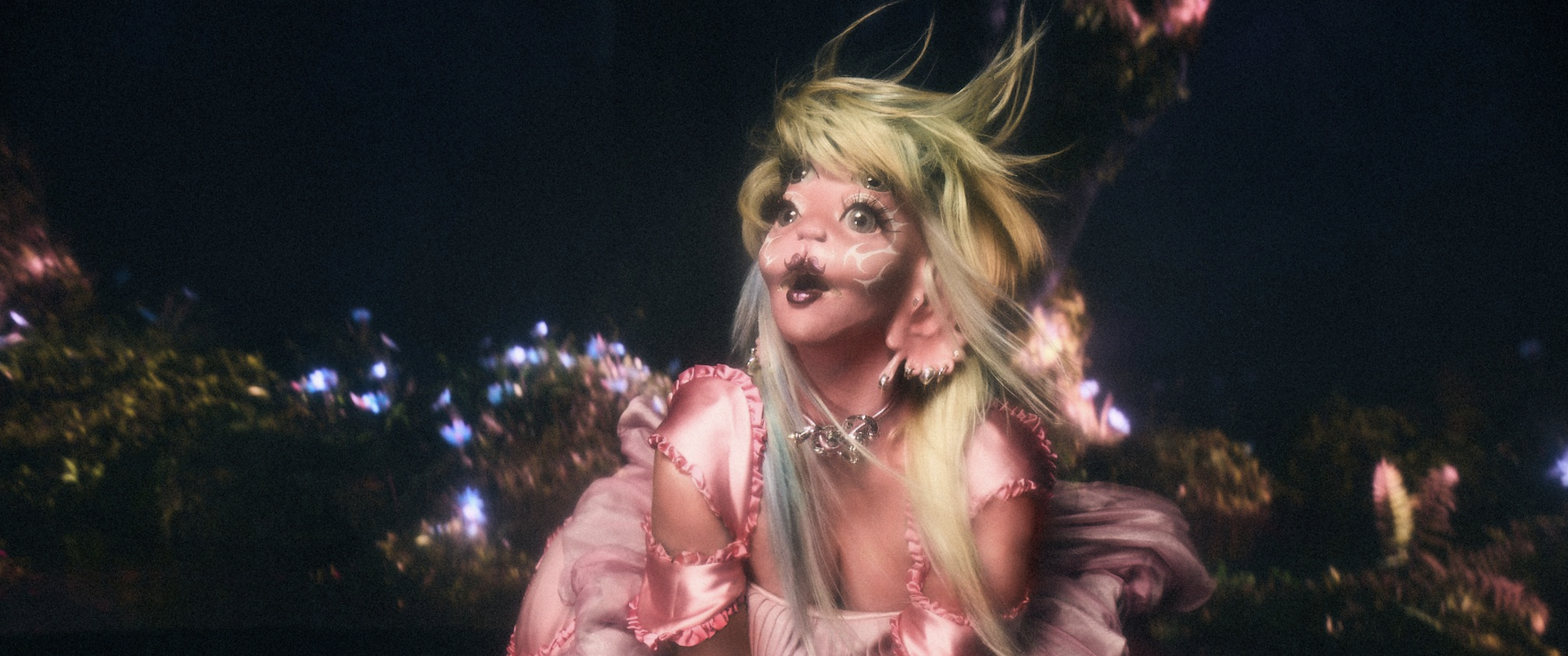Table of Contents Show
On March 31, 2023, Melanie Martinez released her third studio album, titled “PORTALS.” (( Melanie Martinez. “PORTALS.” Atlantic Records. Spotify. 2023. ))

Its genre leaned towards alternative rock or experimental pop, and its visuals were divisive, to say the least. On the album cover, Melanie stood in a forest, wearing a head-to-toe pink suit covered in mushrooms and multiple facial prosthetics, giving her two sets of eyes and a differently structured face entirely.
Compared to Melanie’s previous discography, this was a completely fresh, new look for her, which begs the question of its success as an album. How did fans respond to its bold style? In order to truly understand, we must look back on what came before it.
The Career Launch Of Melanie Martinez
Melanie Martinez’s career is particularly interesting because she remains one of the few artists to gain a celebrity-level following from the TV show The Voice (2010- ). (( John de Mol and Roel van Velzen, creators. The Voice. NBC, 2010. )) While it is a very popular show, and one intended to create artists’ careers, no one from it has picked up traction quite like Melanie has.
She auditioned for the third season of The Voice in 2012 with the song “Toxic” by Britney Spears, displaying her unique, breathy vocals and earning her a place on the show. (( “Blind Auditions, Part 4.” The Voice, season 3, episode 4, NBC, 17 Sept. 2012. )) Throughout her run on the show, she sang songs from a large variety of genres, including “Cough Syrup” by Young the Giant, “Hit the Road Jack” by Ray Charles, and “Seven Nation Army” by the White Stripes.
As The Voice does with all of their contestants’ covers, these songs were released as singles to streaming platforms and sent to radio stations. Two of her covers, including the aforementioned “Seven Nation Army,” as well as a cover of “Too Close” by Alex Clare, even got on the Billboard Hot 100. (( Billboard. “Melanie Martinez Chart History,” 1 May 2023. )) Her time on the show clearly demonstrated that not only was she capable of singing many different types of music, but that fans of the show were responsive to it.
Though she received radio play and was fairly popular among fans of the show, she was eliminated from the top six. (( “Top 6: Live Results” The Voice, season 3, episode 28, NBC, 4 Dec. 2012. )) However, she had amassed a modest following from her time on the show and planned to release music in the future.
The Beginnings Of The “Cry Baby” Aesthetic
About a year after her elimination from The Voice, Melanie released her first single, “Dollhouse.” (( Melanie Martinez. “Dollhouse.” Atlantic Records, 2014. Spotify. )) The genre of the single leaned towards alternative/indie pop, which would be the direction of Melanie’s music all the way up until “PORTALS.”
The “Dollhouse” lyrics detail a broken family — a mother who is addicted to alcohol, a father cheating with another woman, and a brother and sister who try to cope with their parental issues — who are trying their best to pretend they are perfect for the outside world. This whole concept is told through the framework of a dollhouse. As the chorus goes:
“Places, places, get in your places, throw on your dress and put on your doll faces. Everyone thinks that we’re perfect, please don’t let them look through the curtains.”
(( Melanie Martinez. “Dollhouse.” Atlantic Records, 2014. Spotify. ))
It’s really a tight and clever metaphor that lends itself to a clear visual and aesthetic — serious, adult topics displayed through a child’s framework. Melanie definitely utilizes this aesthetic for the single’s promotional shoot as well as the music video. The video’s main colors are a sort of bubblegum pink and black — shown most obviously in Melanie’s hair — and represent that juxtaposition between childlike imagery and adult topics.
Soon after the release of “Dollhouse,” Melanie released an EP of the same name, with “Dollhouse” as the title track. (( Melanie Martinez. “Dollhouse.” Atlantic Records, 2014. Spotify. )) This EP expanded on the theme of the single, with tracks like “Carousel” detailing a cyclical relationship that goes through the same problems over and over through the imagery of a carousel spinning around endlessly. (( Melanie Martinez. “Carousel.” Dollhouse, Atlantic Records, 2014. Spotify. ))
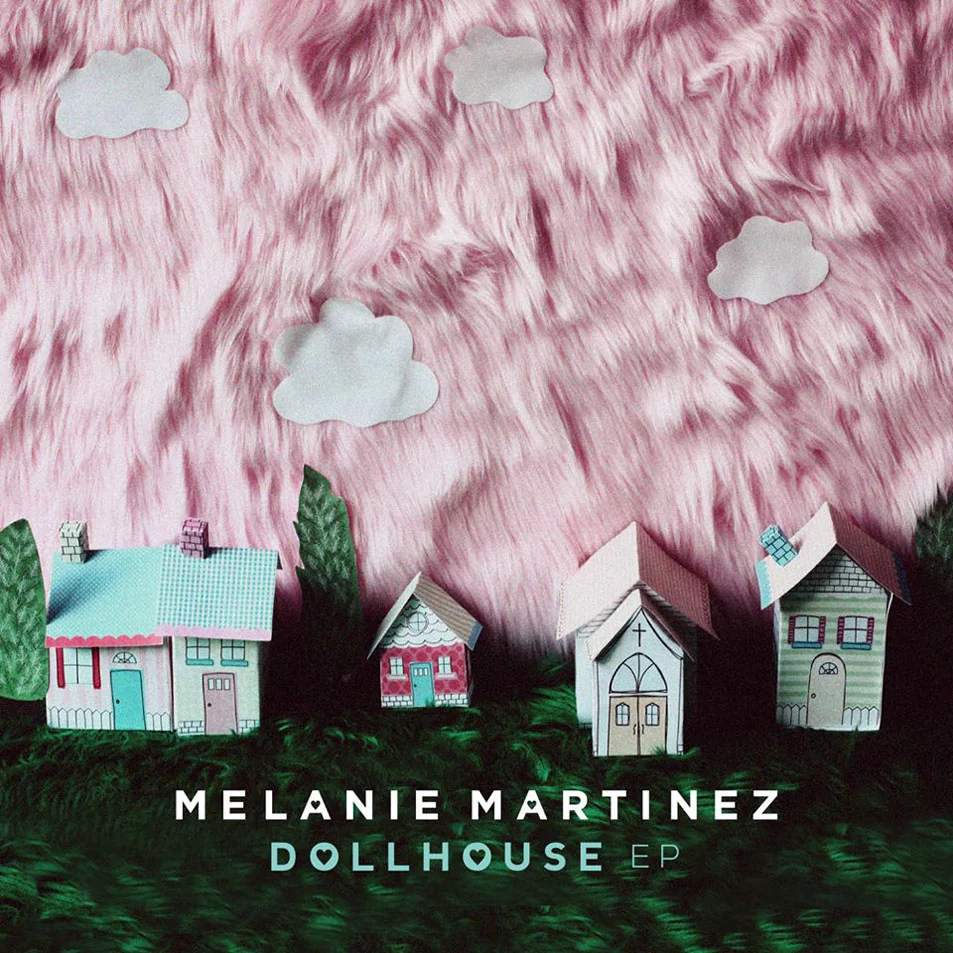
The EP cover art also utilized a semi-similar color palette to the single’s music video, with the main colors being bubblegum pink and mint instead of pink and black. “Carousel,” in particular, was met with a lot of success from fans and was even featured in a preview for the show American Horror Story (2011- ). (( Ryan Murphy and Brad Falchuk, creators. American Horror Story. FX, 2011. )) (( American Horror Story: Freak Show (Official Extended Trailer HD). YouTube. Uploaded by AHS Greece. 8 Sept. 2014. ))
The Popularity Of “Cry Baby”
In June of 2015, about a year after the release of the “Dollhouse EP,” Melanie released the single “Pity Party.” (( Melanie Martinez. “Pity Party.” Atlantic Records, 2015. Spotify. )) “Pity Party,” once again, followed a similar theme to the previous EP, with lyrics about no one showing up to a child’s birthday party, and the deeply sad and rejecting feeling that comes with that.
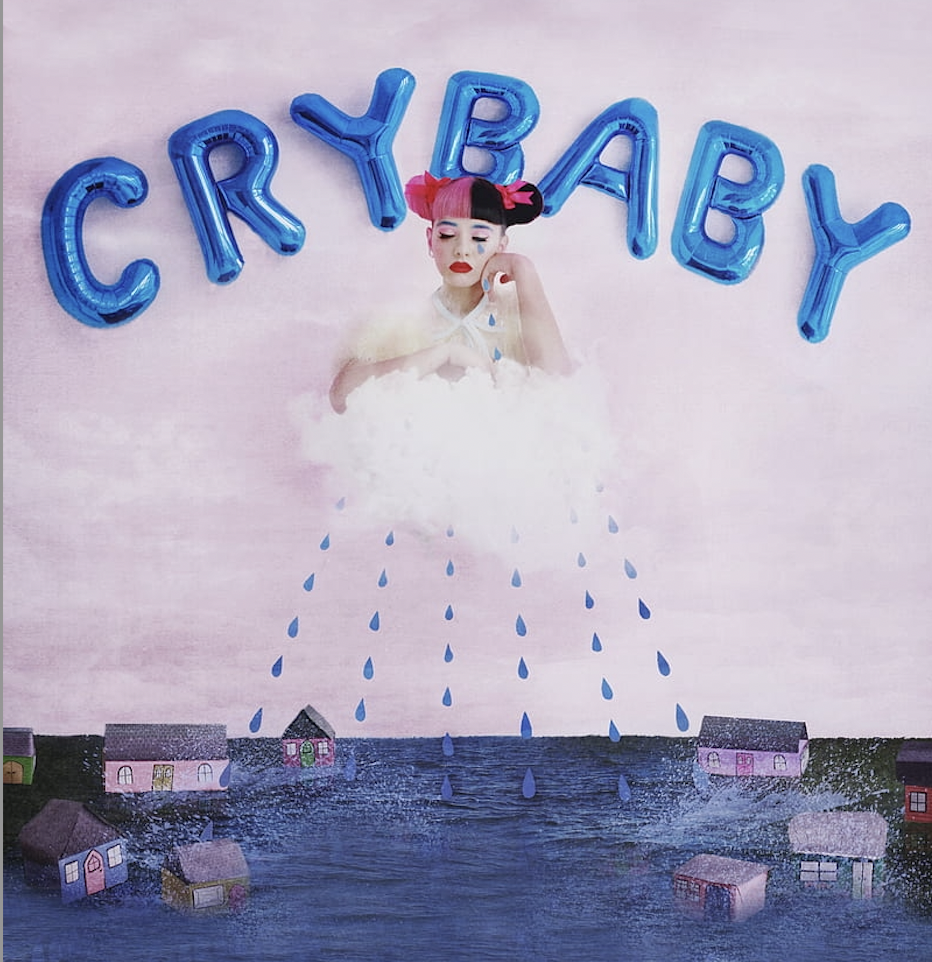
Other singles, “Soap” and “Sippy Cup” followed in a similar vein before the album’s official release later that year. On August 14, 2015, her debut album “Cry Baby“ was released. (( Melanie Martinez. “Cry Baby.” Atlantic Records, 2014. Spotify. )) All the songs centered around that same theme of childlike aesthetic juxtaposed with adult topics, and each one focused on a different aspect of childhood — including tracks like “Training Wheels,” “Milk and Cookies,” and “Play Date.”
“Cry Baby’s” Unique Appeal
In terms of albums being thematically cohesive, “Cry Baby” is nearly perfect. Every song follows that same structure that was set up all the way back with Melanie’s first single. Listening to the tracks together creates a cohesive story and picture of childhood, and they all evoke a similar mood — nostalgia mixed with an unsettling nature. “Cry Baby” also used similar visuals to the “Dollhouse EP,” the album cover having a bubblegum pink and navy blue color palette. Melanie adopted these visuals into her own style as well, often being pictured in photoshoots or in music videos with doll-like dresses and big bows in her hair.
The album was also wildly successful, especially for a new artist’s debut. It debuted at number six on the Billboard 200, the most popular chart for albums, and remained on the chart for over three years. (( Billboard. “Melanie Martinez Chart History,” 1 May 2023. )) “Cry Baby”‘s success could most likely be attributed to the social media website Tumblr, which was at its peak popularity during the time of the release. Users of Tumblr were most often fans of alternative and indie pop music, so artists like Halsey, Lana Del Rey, The 1975, and Melanie Martinez herself were extremely popular. “Cry Baby” became one of the quintessential albums for both Tumblr users and teenagers that were fans of indie music in general at the time. (( Michael, Di Iorio. “12 Tumblr albums ranked by their significance and impact today.” Tone Deaf, The Brag Media, 10 January 2021. ))
The Album’s Distinct Aesthetics
The aesthetic of the album lent itself wonderfully to marketing, and Melanie and her team also capitalized on that in a smart way. In 2016, she released a limited edition fragrance to go along with the album called the Cry Baby Perfume Milk, which sold extremely well. (( Cry Baby Bottle. 1 May 2023. )) The bottle was shaped like a baby’s bottle of milk, and the packaging matched the album cover perfectly.
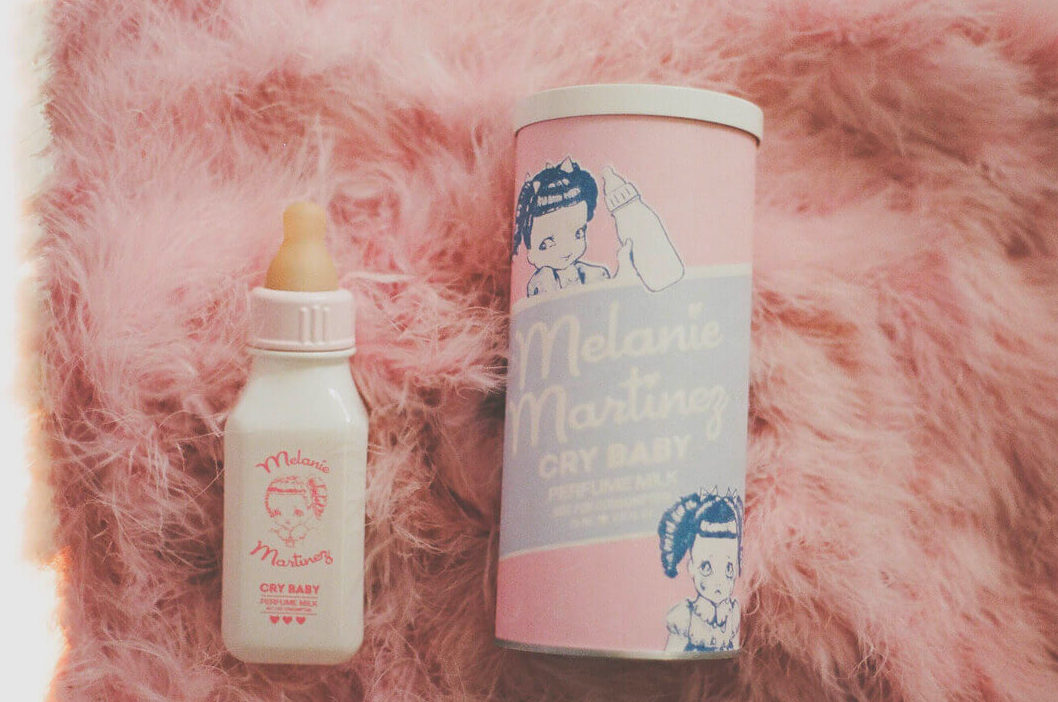
Melanie also released two lipsticks with the makeup company Lime Crime, each that matched a song on the album. She released a brown shade named Teddy Bear and a bright blue called Cry Baby:
Overall, the “Cry Baby” era was not only extremely smart but also very popular among fans. It cemented Melanie as an indie pop artist, and opened up many possibilities for new directions she could take with future albums.
The “K-12″ Album: “Cry Baby” Part Two?
In August 2017, Melanie announced that she would spend the next few years working on a film that would go along with her second album. (( Jason, Lipshutz. “Melanie Martinez Celebrates ‘Cry Baby’ Chart Success, Looks Ahead To Elaborate Album/Film Project.” Billboard, 15 August 2017. )) While a good idea in theory, this caused Melanie to be off of the public’s radar for a considerable time between her two albums.

It might have been smart to release the second album earlier, while she was at her peak popularity, and then the film after she was back in the news. Instead, she released the K-12 film on September 5th, 2019 on Youtube and in select theatres (( Melanie Martinez – K-12 (The Film). YouTube, Uploaded By Melanie Martinez. 5 Sept. 2019. )), and the companion album that went along with it the following day. (( Melanie Martinez. “K-12.” Atlantic Records, 2019. Spotify. ))
The aesthetic of the album and the film was virtually identical to “Cry Baby,” complete with the bubblegum pink and blue colors, as well as childlike imagery. The only difference was, instead of the song titles and lyrics being themed around children from the ages of about two to five years old, “K-12″ was themed around kids in school.
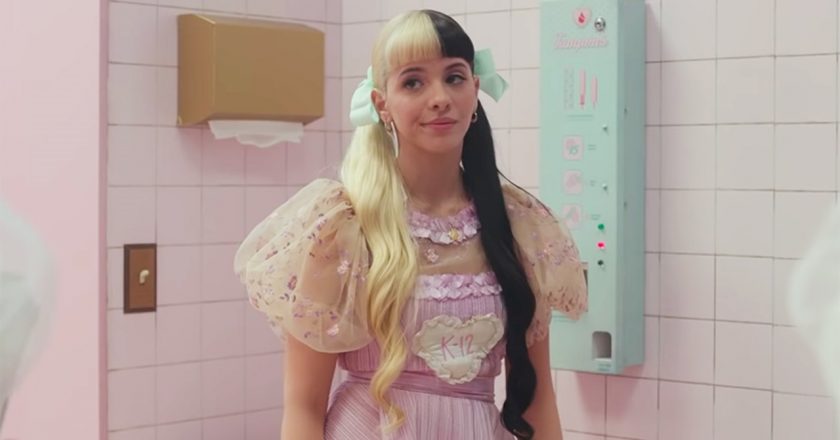
There were thirteen tracks on the album, each representing a different grade level in school from kindergarten through twelfth grade. Instead of tracks centering their adult metaphors around things like training wheels and play dates, “K-12″ had tracks like “Wheels on the Bus,” “Drama Club,” and “Detention.” Melanie had taken the same concept that was successful in “Cry Baby” and aged it up. “K-12″ was essentially a “Cry Baby” part two.
How Did “K-12″ Preform?
Overall, the album was a success, but not nearly as successful as “Cry Baby” had been. “K-12″ debuted at number three on the Billboard 200 chart, though it only stayed on the chart for about four months, as opposed to her first album which had remained on the chart for over three years. (( Billboard. “Melanie Martinez Chart History,” 1 May 2023. )) Fans were responsive, as the music sounded thematically very similar to her most popular album, but Melanie was definitely not as popular with the general public as she had been before.
The “After School EP:” An Extension Of “K-12″
On September 25, 2020, Melanie released another EP, “After School EP,” which would act as a sort of extended version of “K-12.” (( Melanie Martinez. “After School EP.” Atlantic Records, 2020. Spotify. )) It contained songs that might have been on a deluxe version but were instead included in this EP. (( Grunenberg, Kira. “Get Set for Something Special with Melanie Martinez’s ‘After School’ EP.” American Songwriter, 25 September 2020. )) Because of this, the aesthetic and the songs were also in line with her long-standing theme.
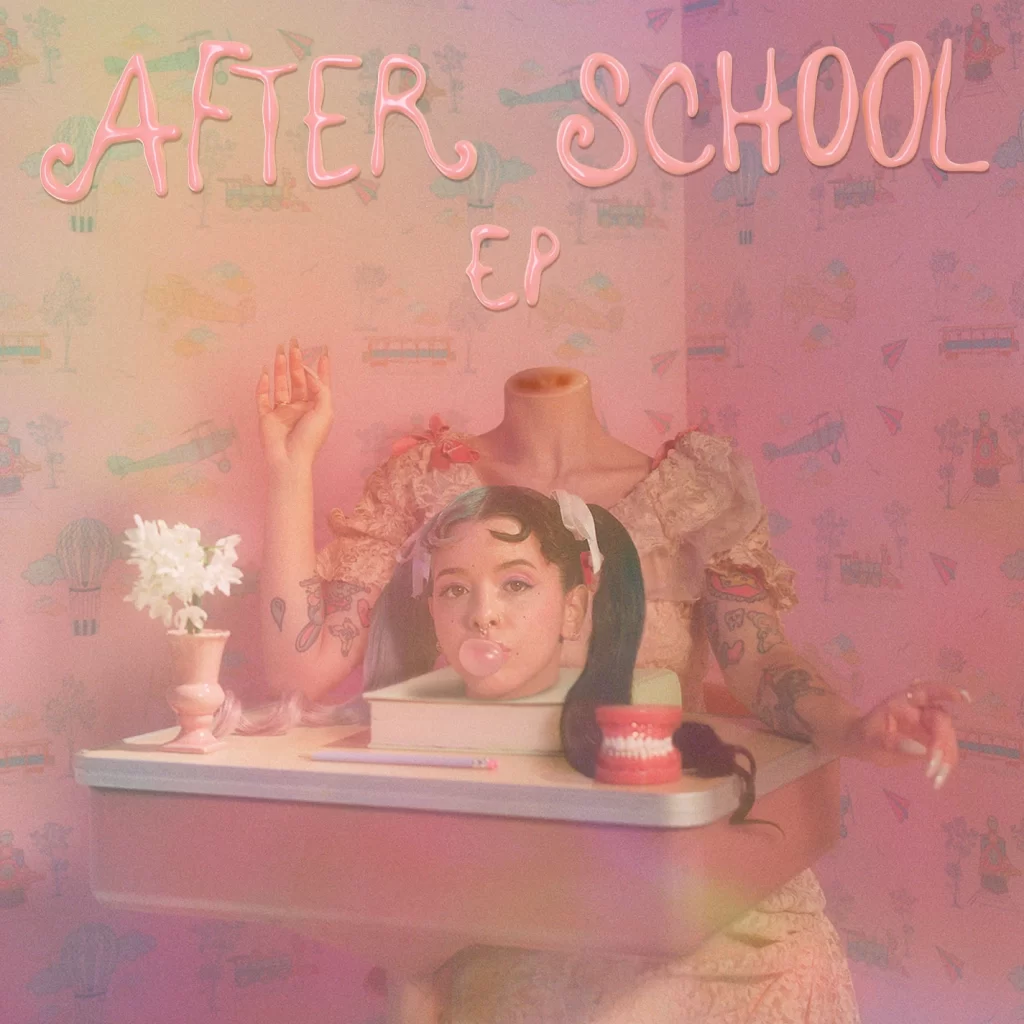
This EP would be the last music Melanie would release until the singles for “PORTALS,” effectively marking the end of the “K-12″ era and her childhood theme as a whole. This means that Melanie stuck to this particular theme for four separate projects (“Dollhouse EP,” “Cry Baby,” “K-12,” and “After School EP”) and for a total of seven years.
Not only that, but every single song she had ever released followed these thematic elements and formatting. Most artists take at least a few singles to find their personal style, but Melanie stuck with the same style from the first song she ever released. Fans, and the public in general, knew Melanie for this particular theme and look — it was all she had ever done in multiple projects, and it was what she was famous for.
R.I.P. Cry Baby
On February 18, 2023, around two years after the release of the “After School EP,” Melanie posted an Instagram video of a large mushroom in a foggy forest. As the fog cleared and the camera panned forward, the words “R.I.P. Cry Baby” were revealed to be carved onto the mushroom. This was the first teaser of the new album, and the first hint as to what the aesthetic of it would be.
She then posted a series of short video clips to her socials of an embryo of an alien-like creature developing and eventually posted the announcement for the album’s release date and title. This video showed Melanie dressed as a pink alien hatching out of an egg in the forest.

Comments on these social media posts were mixed — fans were either extremely excited about the new era or put off by the “unusual” visuals — there seemed to be no in-between.
Melanie released the first single on the album, “DEATH,” on March 17th. (( Melanie Martinez. “DEATH.” Atlantic Records, 2023. Spotify. )) If the “Cry Baby” era had died, “DEATH” was the birth of Melanie’s new “PORTALS” era. The single featured the lyrics “I’m back from the dead” over and over again in the chorus. Additionally, there was also a noticeable difference in the style of the music itself. Melanie’s voice had a significant amount of autotune and vocal effects, and gone were the childlike bouncy and light beats that defined her past work. Instead, the single was defined by its heavy percussion and electronic sounds. Melanie’s voice is definitely suited to it, as we know from her time as a contestant on The Voice, so the notability of the genre switch lies more in the fact that it is just so different from her previous albums.
The Release Of “PORTALS”
The album was later released on March 31st. (( Melanie Martinez. “PORTALS.” Atlantic Records, 2023. Spotify. )) The style of music was consistent with “DEATH,” and the genre of “PORTALS” leaned more towards experimental/alternative rock than pop. Heavy percussion was present on almost every track, and some tracks even featured electric guitars, such as “BATTLE OF THE LARYNX” and “EVIL.” And though the themes of rebirth, immortality, and connection to earth were present throughout all the tracks, it wasn’t like with “Cry Baby” or “K-12.”
Both of her previous albums fully focused on one identifiable element of the theme and developed a metaphor for it on each track. “PORTALS” does that with some songs — such as “LEECHES” being a metaphor for a person that takes everything out of you until you have nothing left, leeching off of you — but not all of them, so the structure falls a little flat in comparison to how tight her other projects were. (( Melanie Martinez. “LEECHES.” PORTALS, Atlantic Records, 2023. Spotify. ))
In terms of success, the album has done fairly well so far, but not in comparison to Melanie’s previous projects. It debuted at number two on the Billboard 200 chart, but it has only been dropping since. (( Billboard. “Melanie Martinez Chart History,” 1 May 2023. )) After only five weeks, it’s fallen to number twenty-six. (( Billboard. “Billboard 200,” 10 May 2023. )) It’s not that “PORTALS” was necessarily unsuccessful, it just faded out of public consciousness much quicker than her previous projects.
Did The Aesthetic Shift Of “PORTALS” Pay Off?
Generally, artists switching up their style of music to fit the current trends is what helps them maintain relevancy. So why didn’t “PORTALS” match Melanie’s previous projects in positive attention from fans and the public?
The main thing is that people had gotten used to Melanie as an artist who only released one type of music and had one specific style. She didn’t just stick to a particular genre, color palette, or even topic — she stuck to a very specific concept for songs. She built her entire brand around the concept she created, and while it was a genius concept, she ran it into the ground. Only when she had exhausted all the ideas that could reasonably go with it — and the number of streams was already dropping — did she switch it up.
There are certainly fans who enjoy “PORTALS,” but because Melanie stuck to a particular style for too long, there are fewer of them than there could have been.
How To Successfully Switch Aesthetics: Taylor Swift
If we were to contrast Melanie Martinez with another artist who has completed these switches between eras seamlessly, the most obvious pick would be Taylor Swift. Taylor Swift has transitioned from vastly different themes and styles of music, and she is still as relevant as ever. The difference? Taylor Swift spends only one album and a maximum of around two to three years on each era. The only exception to this rule would be her albums “Folklore” and “Evermore,” but those were released back to back within the same year. (( Taylor Swift. “Folklore.” Taylor Swift, 2020. Spotify. )) (( Taylor Swift. “Evermore.” Taylor Swift, 2020. Spotify. ))
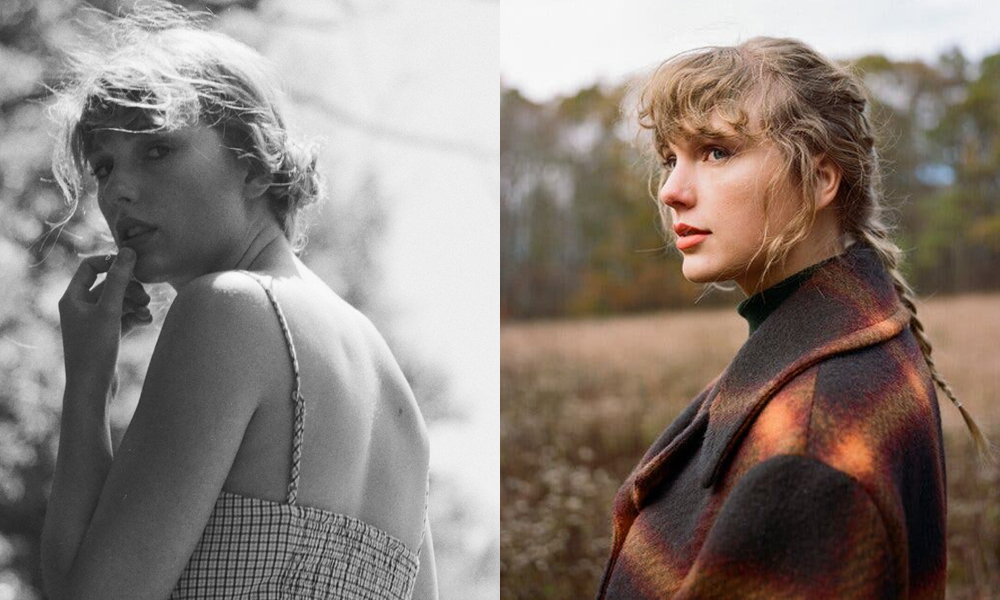
Additionally, Taylor stated that they were “sister” albums, or albums that were meant to be listened to together. (( Romano, Nick. “Taylor Swift announces second surprise album, ‘Evermore’, a ‘sister’ record to ‘Folklore’.” Entertainment Weekly, 10 December 2020. )) If Taylor Swift had remained in one era for longer than a few albums and a few years — she would likely not have been able to maintain popularity as long as she has.
The way that you are able to build as large of a fan base as Taylor Swift has is by constantly evolving with music and creating fans who enjoy the switches in genres and styles and will be excited for whatever the artist releases — because they love the artist themself, irrespective of the type of music.
The Future Of Eras In The Music Industry
As Taylor Swift grows in popularity, with her “Eras Tour” breaking ticket sales and attendance records, this pattern of artists having “eras” and switching up their musical styles often will become increasingly more common in the music industry. (( Sobelman, Abbey. “Taylor Swift’s “Eras Tour” breaks records on opening weekend.” Jack Central, 22 March 2023. ))
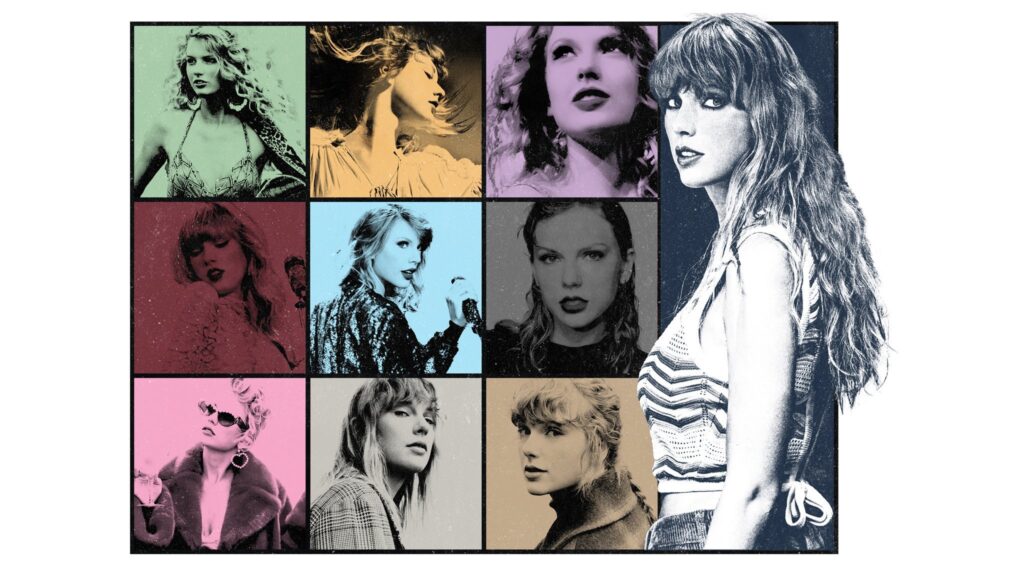
It is important to recognize when and how those switches work successfully and understand when they don’t. “PORTALS” and the trajectory of Melanie Martinez’s career is a good example of how that switch in eras can be less effective, at least in comparison to how popular she used to be during the “Cry Baby” era.
